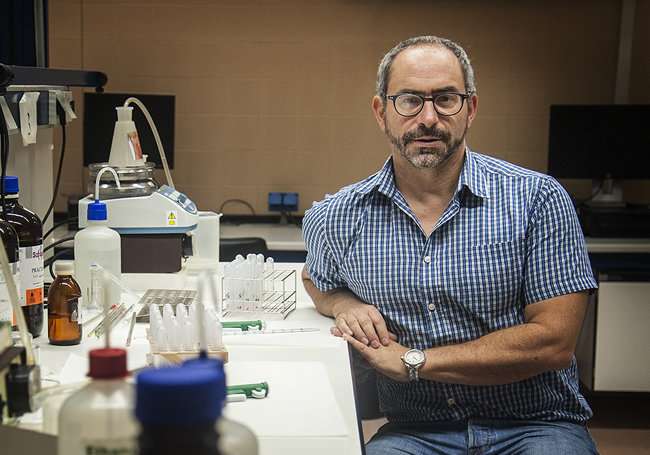Niosomes: efficient DNA delivery vehicles for gene therapy of the central nervous system

In a new study, the NanoBioCel group of the UPV/EHU's Faculty of Pharmacy and the University of Elche have designed niosomes, lipid vesicles for use in gene therapies, to treat diseases of the central nervous system. These vesicles use lycopene as an element, which has enabled transfection into brain cells to be improved.
Gene therapy has huge potential for therapeutic purposes. It basically consists of inserting genetic material into target cells to incorporate a new function, re-establish a defective function or interfere in an existing function. Gustavo Puras, a member of the NanoBioCel group of the UPV/EHU's Faculty of Pharmacy and one of the authors of the study, says that one of the main difficulties it poses is "to successfully deliver this new genetic material to the cell. In the case of the nervous system, this transfection is particularly complicated, due among other factors to the physical barriers that the brain has and which have to be overcome."
This research group opted to study niosomes, a type of non-viral vector. "They are lipid particles, vesicles, made up of three components: a cationic lipid, which is responsible for bonding with the DNA that one is intending to transfect; another helper lipid that facilitates entry into the nucleus through the membrane and prevents degradation of the niosome by the cellular lysosomes, and a non-ionic tensioactive agent that stabilises the emulsion used in dealing with these particles," added Dr. Puras.
The study consisted of various phases: in the first one what they did was to select the three components with which to design the niosome particle itself. The innovative part of this study, as Puras explained, was that "we used lycopene as the helper lipid, the pigment which gives tomatoes their colour and which is known to have properties in treating cancer and cardiovascular diseases, but whose possible role in gene therapy had not been studied before." Afterward, a plasmid containing a fluorescent green protein was joined to the niosome. "It is not a therapeutic plasmid, but it enabled us to know whether the cells had been transfected or not, because if they had, they would emit green fluorescence."
Once the niosome-plasmid complex had been achieved and the physical and chemical characterisation made, they conducted in vitro tests using models of neuronal cells, to see the transfection rate, in other words, the percentage of fluorescent green cells achieved, and the viability of these transfected cells. "What we saw was that incorporating the lycopene into the formulation improved the transfection of these neurons."
Transfection of glial cells rather than neurons
In the final phase, they conducted in vivo tests by injecting the preparation into the brains of rats. They saw that neurons were not transfected, but glial cells and cells from the walls of the blood vessels were. "These divide more; that is why we managed to transfect them in a greater proportion."
The researcher was "very satisfied" with the results obtained: "What we were aiming to do was to successfully transfect cells of the central nervous system, and we achieved that. In a subsequent step, the gene that we transfected will be a protein that produces bioactive agents, or agents that encourage revascularization. The cells that turned out to be transfected to the greatest extent, the glial cells, are highly abundant in the central nervous system, and play a crucial role in the proper development and functioning of nerve tissue. What is more, their alteration is associated with a whole range of neurological disorders, such as brain haemorrhages, multiple sclerosis, epilepsy, Alzheimer's and Parkinson's."
These results will allow them to take the research further. Apart from assessing the effect that therapeutic plasmids could have, the researcher says that there is room for improvement both in the transfection and in the viability of the cells; the duration of the expression of the transfected gene, etc. can also be studied. "Many possibilities are being opened up," he concluded.
More information: Mohamed Mashal et al, Non-viral vectors based on cationic niosomes as efficient gene delivery vehicles to central nervous system cells into the brain, International Journal of Pharmaceutics (2018). DOI: 10.1016/j.ijpharm.2018.09.038
















